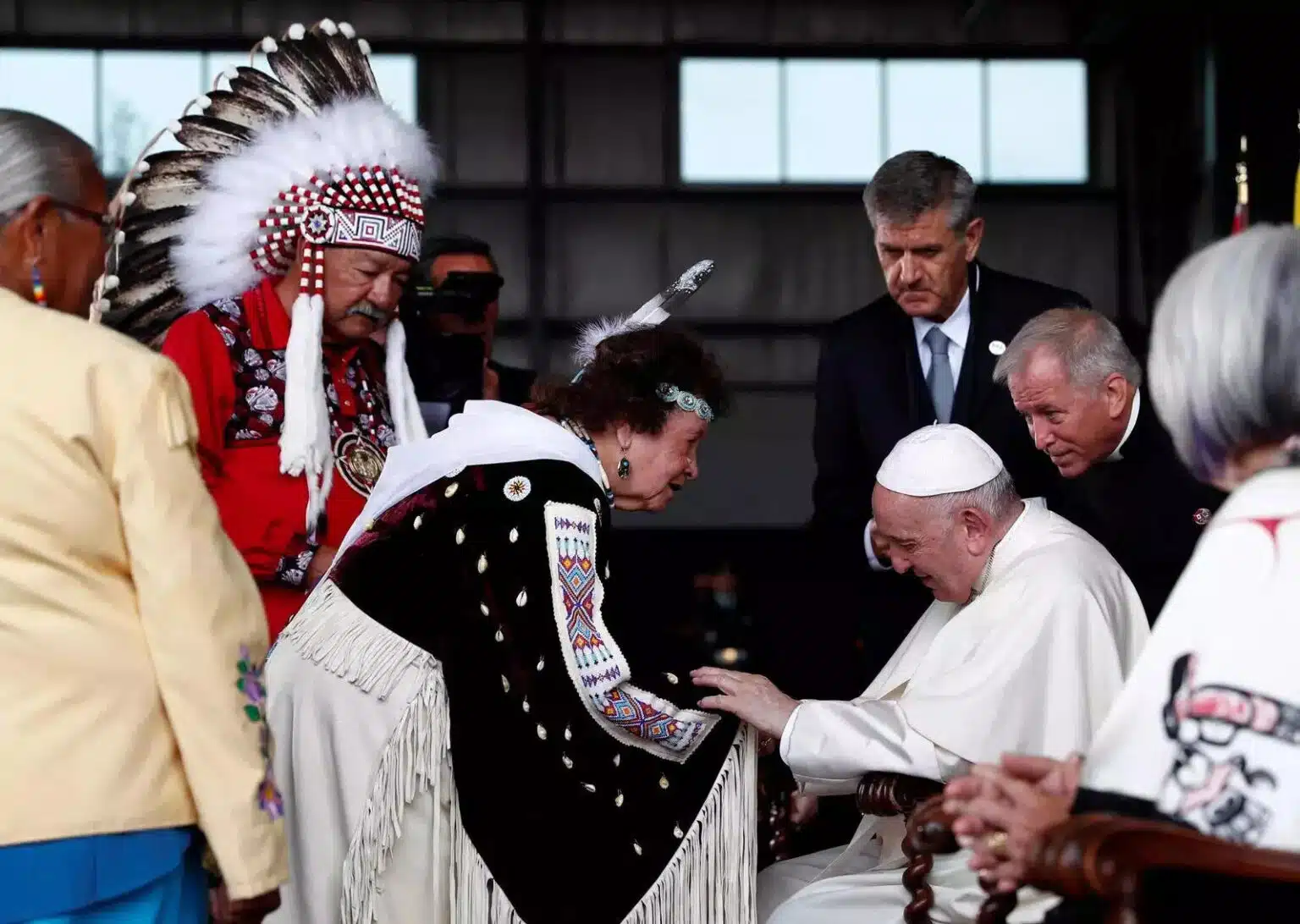Pope Francis has said that talks are going on about returning artefacts in the Vatican Museum that originally belonged to the indigenous people of Canada.
On Sunday, Pope Francis expressed the willingness of the Vatican to return colonial-era artefacts and other problematic objects in the Vatican museum that had been acquired from the indigenous people in Canada on a case-by-case basis.

Pope Francis quoting the seventh commandment in an airborne press conference said that, when something is stolen, it has to be returned.
The three fragments of the Parthenon sculptures that were part of the Vatican Museum’s collection for the past two decades have been returned to Greece by the Pope recently.
“The Right Gesture”- Pope
The pope said on Sunday that restoring was “the right gesture” and that when returns were possible, museums should undertake them.
He said that in any circumstance where it’s necessary to return things to make a gesture, it’s better to do it.
He further added that sometimes there are no political, real, or concrete possibilities to make a return, but in cases where one can, one should do it. Restitution is good for everyone, so one should not get used to putting his hands in others pockets.
The debate on restitution
The Pope has forced many museums in Europe and North America to think about their ethnographic and anthropological collections.
This debate on restitution has drawn attention to the colonial conquests of Africa, the Americas, and Asia, and demands have been made by the indigenous communities and the countries to restore the war loots.

The Vatican Museum has a vast collection of handicrafts originally made by indigenous people from around the globe. Most of these collections were sent to Rome for an exhibition in 1925, which took place in the Vatican gardens.
The museum has maintained that these artefacts, including masks, wampum belts, and feathered headdresses, were gifts to the Vatican.
The Indigenous scholars are, however, of the view that people of that time could not have freely offered their artefacts, given that they were a part of the colonial regime.
Efforts made for restitution
The first ever Latin American Pope, Pope Francis, is well aware of the history. Last year, he visited Canada to personally apologise to the Indigenous people for the abuses that were inflicted upon them by the Catholic missionaries at residential schools.
The Indigenous people visited the Vatican’s Anima Mundi museum in a follow-up visit, where they saw some of their ancestors’ handicrafts and expressed their desire to have some of them back.
The Pope had said that the Holy See’s experience of meeting the indigenous people had been “very fruitful.”

The Vatican has formally removed the “Doctrine of Discovery”, a theory backed by 15th-century “papal bulls” to legalise the colonial period take-over of Native lands, which forms the basis of some of the property laws in the U.S. and Canada today.
Looting was very common during the colonial era; the colonisers often took good things from others, the pope said.
Going forward, museums were going to make discernment in each case and return objects where restitution is possible.

He also referred to the great obelisk at the centre of St. Peter’s Square that the Roman emperor Caligula had brought to Rome more than 2000 years ago. He asked what they would do if the Egyptians came tomorrow and asked for the obelisk.
The 2020 book “The Brutish Museums” talks about the looting of the Royal Court of Benin City by British forces in 1897, including the Vatican Museum.
The book also mentions the Vatican as one of the museums that may have been stolen from Benin City in today’s Nigeria.
The Nigerian Embassy recently asked about this claim. However, the Vatican has not yet responded to all of these claims.













